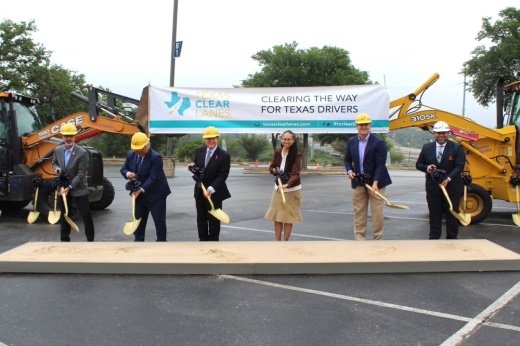The background
A groundbreaking ceremony was held April 16 outside Community Bible Church to mark the launch of the next phase of widening and upgrading of the freeway—a 4-mile stretch between US 281 and Redland Road.
Spearheaded by the Texas Department of Transportation, the $218 million effort to enhance what TxDOT officials call Segment 4 in the Loop 1604 project is part of a yearslong initiative, which will result in the addition of six total lanes to the freeway between SH 16/Bandera Road and I-35.
The overall $1 billion Loop 1604 venture will also produce reconfigured entrance and exit ramps, a new Blanco Road intersection, a revamped I-10 interchange, and bicycle and pedestrian accommodations along the frontage roads.
TxDOT officials said work tied to Segment 4 is scheduled to wrap up in 2027; work on Segment 5—from Redland Road to I-35—will begin sometime after 2025 once that portion of roadway is formally funded.
Neighborhood residents, merchants and motorists are urged to watch out for initial closures related to Segment 4 activities. The Loop 1604 eastbound main lanes between the Blanco Road exit ramp and the Gold Canyon Road entrance ramp will be closed 9 p.m.-5 a.m. daily April 16-19 to allow workers to set up barriers, and do striping and repavement.
What they’re saying
Special guests who spoke at the groundbreaking ceremony said the entire Loop 1604 project is meant to reduce traffic congestion and improve mobility in an area surrounded by continuing population growth. According to state data, average daily traffic volumes are projected to increase to 290,000 vehicles on Loop 1604 by 2045. TxDOT leaders said widening the freeway will decrease average commute times across the corridor by as much as 76%.
“It's designed to meet the traffic demand along the corridor now and in the future,” said Charles Benavidez, district engineer for TxDOT's San Antonio district.
Texas Transportation Commission Chair Bruce Bugg said enhancing mobility on Loop 1604 and on other key corridors in the San Antonio area will complement ongoing economic growth locally and statewide.
“We have population growth in Texas, and we have an economic and job creation machine in Texas. That's why we need our transportation system to stay consistent with that,” Bugg said.
Bexar County Judge Peter Sakai thanked state and local leaders for collaborating to secure funding for the Loop 1604 project.
“If the 2040 traffic projection of 290,000 vehicles per day becomes a reality, the challenges will increase, and we must continue to meet the needs of our community,” Sakai said.
Bexar County Precinct 1 Commissioner Rebeca Clay-Flores, who is also the elected chair of the Alamo Area Metropolitan Planning Organization’s transportation policy board, agreed with the other speakers. She also thanked Texas voters who in 2014 and 2015 approved two state constitutional amendments to help significantly increase funding for future, large-scale transportation projects around Texas.
"This project shows the importance of planning, regional partnerships and keeping our region moving forward,” Clay-Flores said.
Bexar County Precinct 3 Commissioner Grant Moody, who represents much of the north Loop 1604 area, said he is happy state and local leaders understand the importance of supporting key transportation projects.
“The fact that the state of Texas is investing $1 billion is a once-in-a-generation project for the north side of San Antonio and Bexar County, that is a tremendous effort, and it’s going to be tremendous for the quality of life for all constituents in Precinct 3 and for the rest of Bexar County,” Moody said.





